Takeshi Ikeuchi’s kei truck is a minimalist Japanese mobile showroom
Takeshi Ikeuchi's kei truck design is a Japanese timber specialist’s minimalist mobile showroom
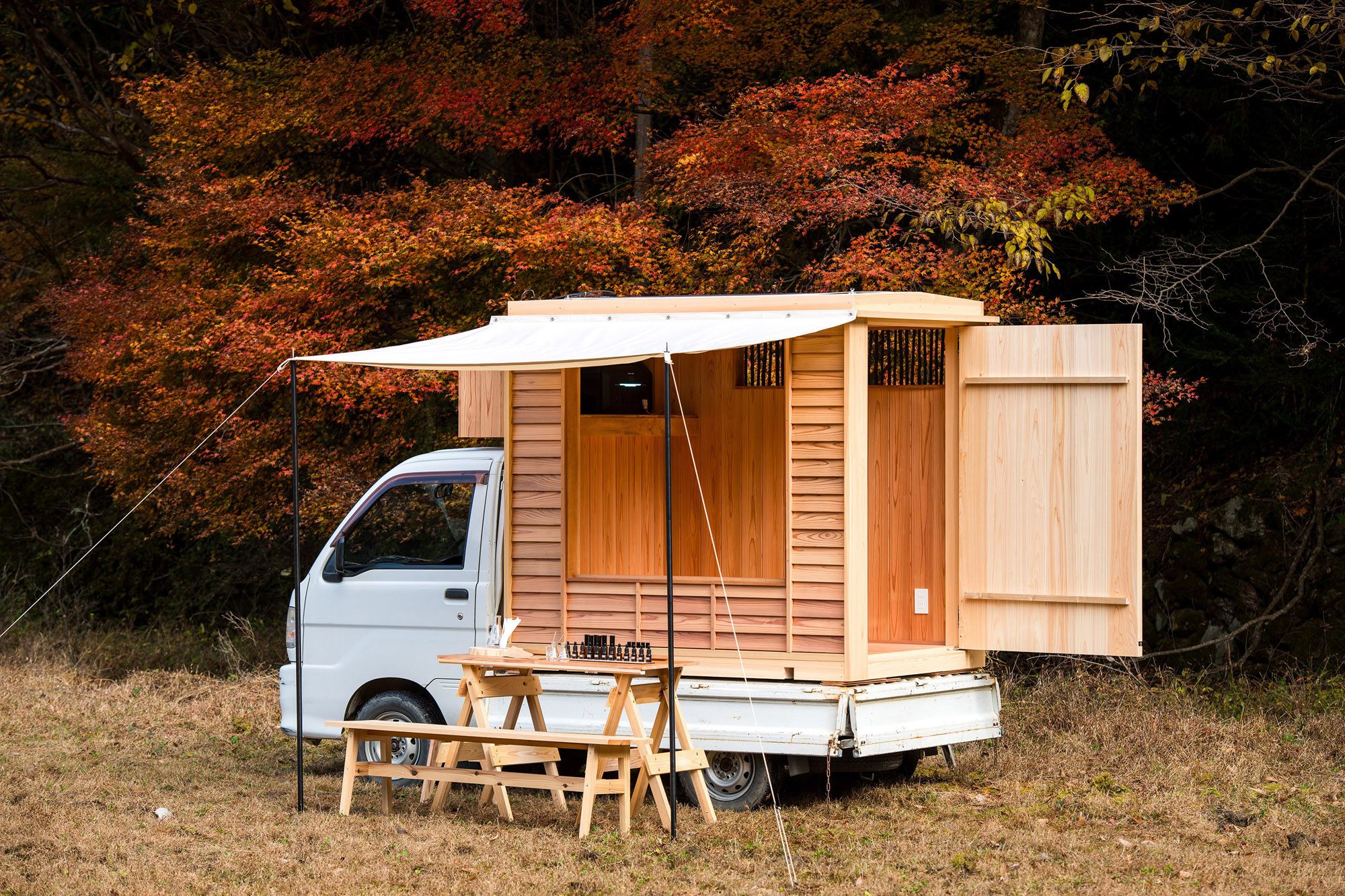
A chance encounter at a forest campsite led to architect Takeshi Ikeuchi’s unusual commission for a moving wooden showroom for timber specialist Takeda Forestry. The initial brief from the company, based in Ehime on Shikoku island, Japan, was to both show off some of its milled sugi (cedar) and hinoki (cypress) planks; and design a showroom on wheels that could be used flexibly – for example as a small shop or for workshops.
‘Takeda’s factory sits in a rural place called Oda, famous for the quality of both types of timber,’ Ikeuchi explains. ‘This is Kei truck country, and we thought, what would be better than using a tiny truck as the base for their moving showroom?’
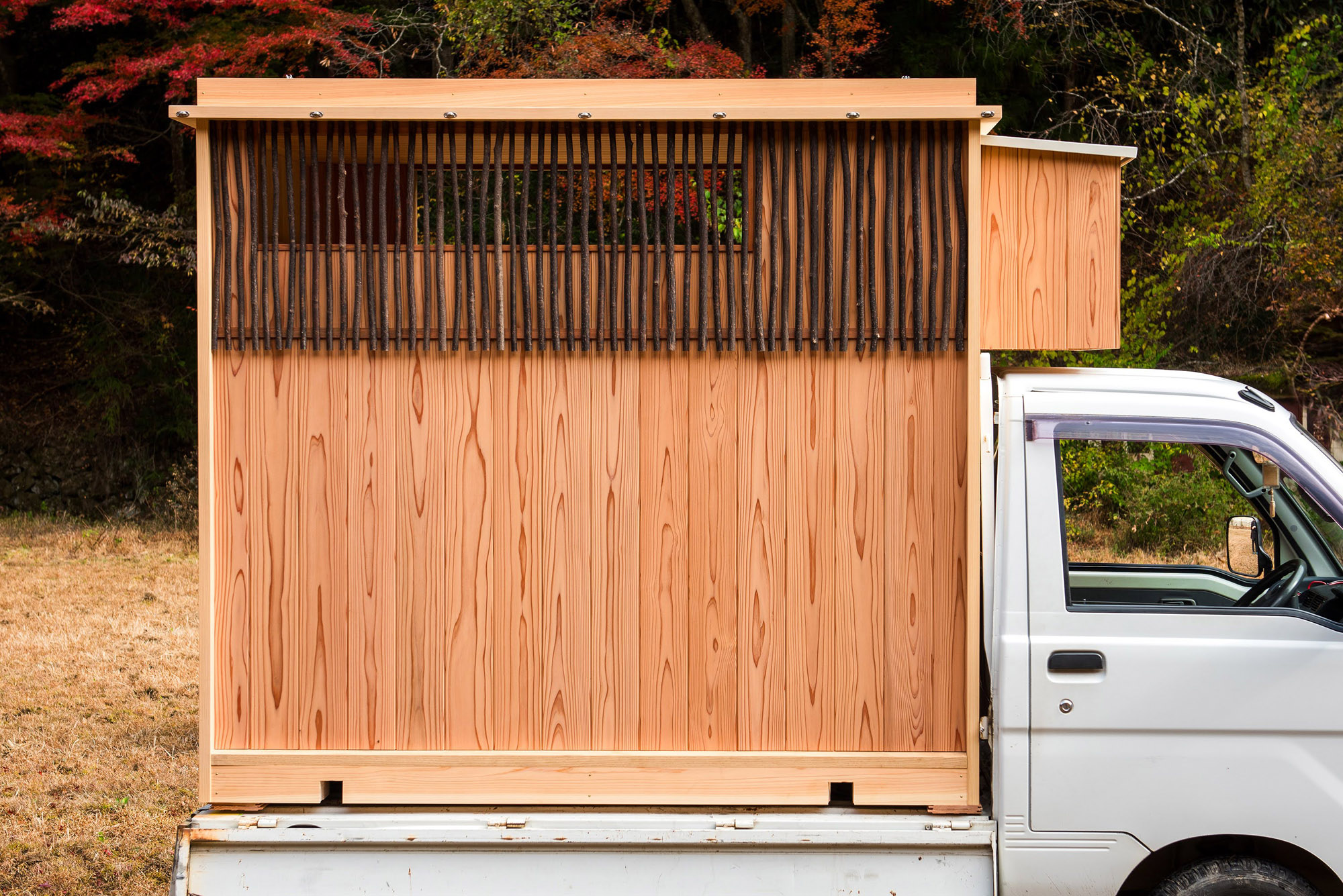
A reimagined kei truck by Takeshi Ikeuchi
Kei trucks are a stalwart of transportation in rural Japan. With a body a little over 3m long and under 1.5m wide, they are perfect for manoeuvering round narrow country roads. While nimble and easy to drive, their relatively large bed can pack up to 350kg, making them the perfect tool to haul farm produce, firewood or timber.
It was indeed the bed of the truck that determined the dimensions of the ‘showroom’ (1.1m wide X 1.7m long), and as traffic regulations only allow for a total vehicle height of 2.5m, the inside of the cabin is a mere 1.5m high. Its two sides have been finished in red knot-free cedar – one side in clapboard, and the other in vertical tongue and groove planks. The ceiling and door at the back are knot-free hinoki wood.
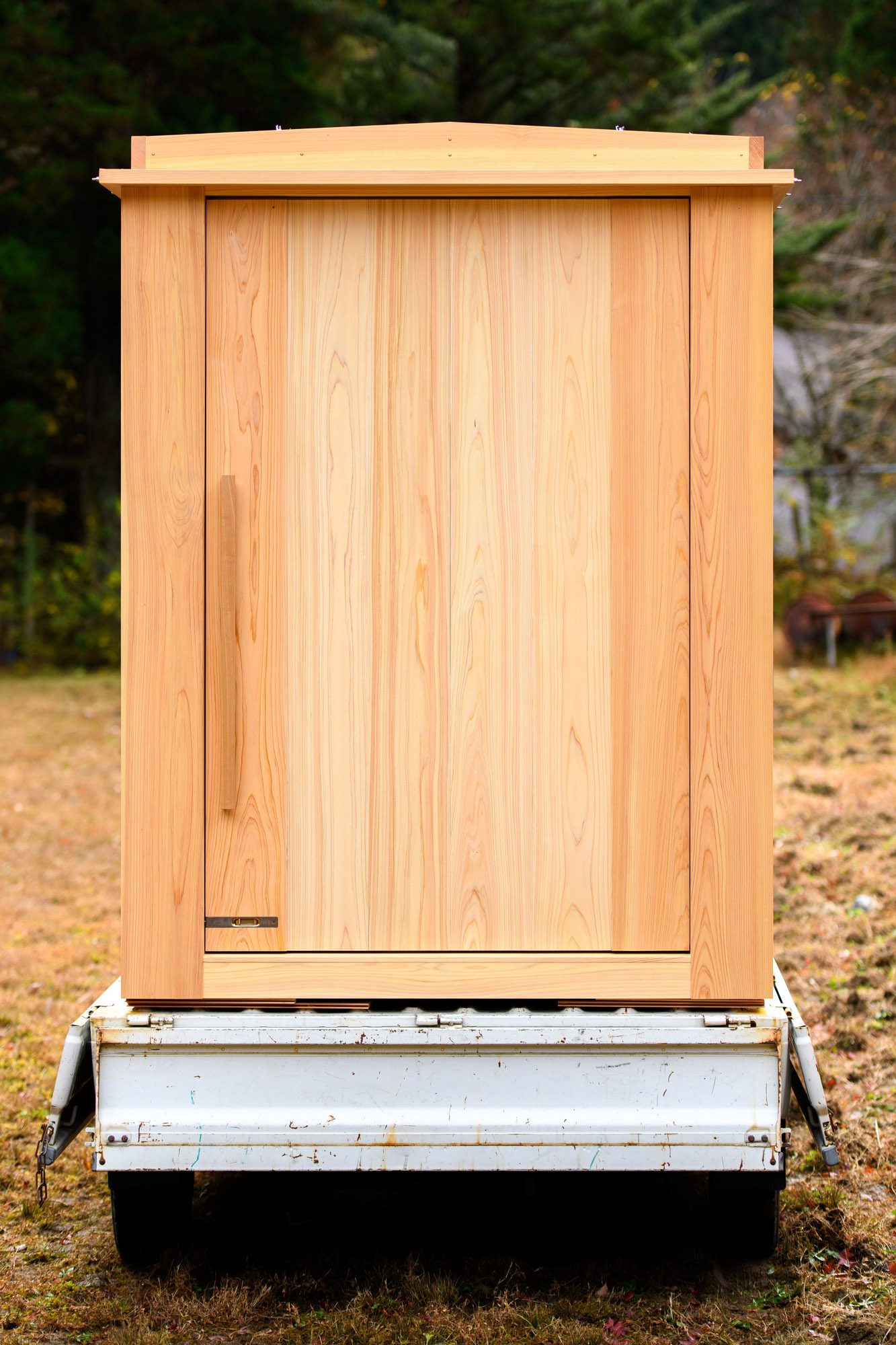
There is a large opening to one side allowing a clear view of the interior. This comes in handy when the showroom is turned into a mobile store. A narrow window on the opposite end is wrapped in a spaced-out row of raw kuromoji branches that bring a rougher, organic touch to the otherwise minimalist exterior.
The roof is covered in a simple tent fabric and features a large solar panel that charges a battery stored in a keyaki wood box on top of the truck’s cab. Hooks have been installed on both sides so a simple tarp can be added to extend the footprint of the showroom as needed.
As with all good Japanese craftsmanship, the finish shows a deep understanding and appreciation of the timber. The wood is left untreated and will undoubtedly age beautifully over time. The wooden structure can easily be removed from the bed of the truck by inserting two standard scaffolding pipes into two holes at the base, and simply lifting the tiny cabin off.
Receive our daily digest of inspiration, escapism and design stories from around the world direct to your inbox.
‘It was important that the showroom could be lifted on and off easily for flexibility,’ Ikeuchi explains. ‘If the showroom proves a success, Takeda is even considering offering DIY house kits for sale in the future.’ We hope they ship internationally.
A version of this article appears in the April 2024 issue of Wallpaper*, available in print, on the Wallpaper* app on Apple iOS, and to subscribers of Apple News +. Subscribe to Wallpaper* today
Originally from Denmark, Jens H. Jensen has been calling Japan his home for almost two decades. Since 2014 he has worked with Wallpaper* as the Japan Editor. His main interests are architecture, crafts and design. Besides writing and editing, he consults numerous business in Japan and beyond and designs and build retail, residential and moving (read: vans) interiors.
-
 The architecture of Mexico's RA! draws on cinematic qualities and emotion
The architecture of Mexico's RA! draws on cinematic qualities and emotionRA! was founded by Cristóbal Ramírez de Aguilar, Pedro Ramírez de Aguilar and Santiago Sierra, as a multifaceted architecture practice in Mexico City, mixing a cross-disciplinary approach and a constant exchange of ideas
-
 A first look at Bulgari Resort and Mansions Bodrum
A first look at Bulgari Resort and Mansions BodrumArchitecture, landscape and refined luxury come together at this Mediterranean retreat, opening in 2027
-
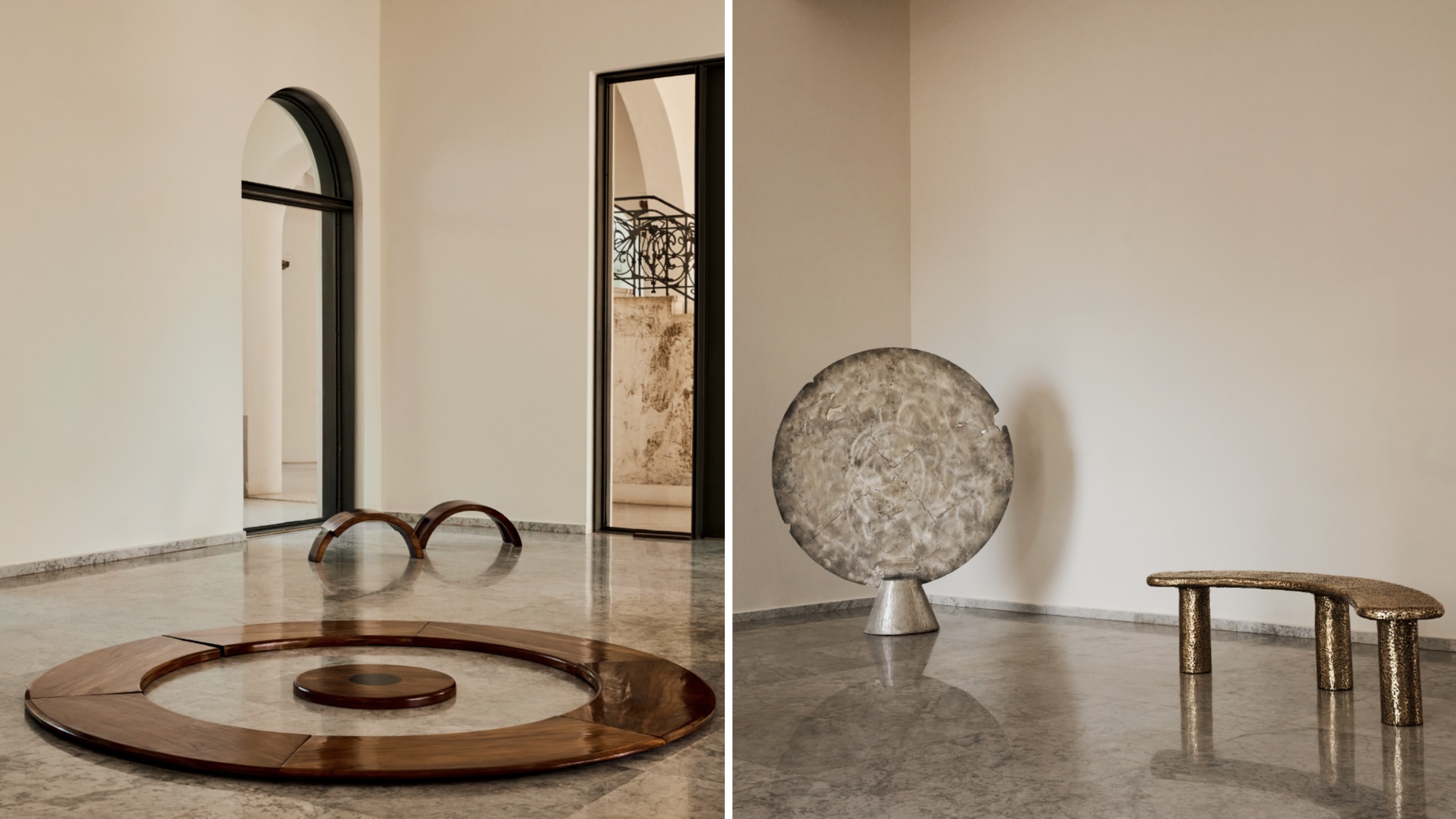 Togo's Palais de Lomé stages a sweeping new survey of West African design
Togo's Palais de Lomé stages a sweeping new survey of West African design'Design in West Africa' in Lomé, Togo (on view until 15 March 2026), brings together contemporary designers and artisans whose work bridges tradition and experimentation
-
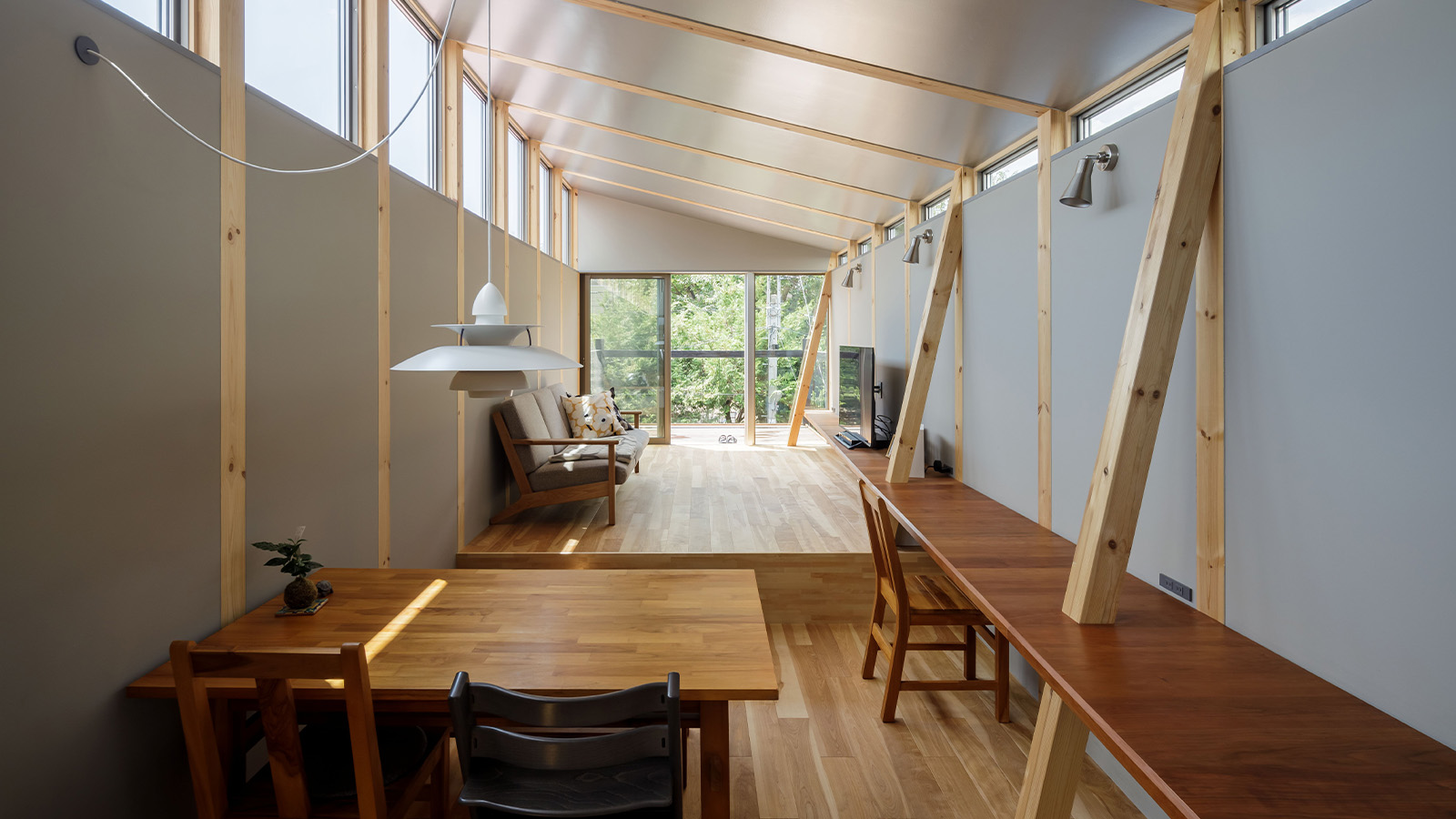 This Fukasawa house is a contemporary take on the traditional wooden architecture of Japan
This Fukasawa house is a contemporary take on the traditional wooden architecture of JapanDesigned by MIDW, a house nestled in the south-west Tokyo district features contrasting spaces united by the calming rhythm of structural timber beams
-
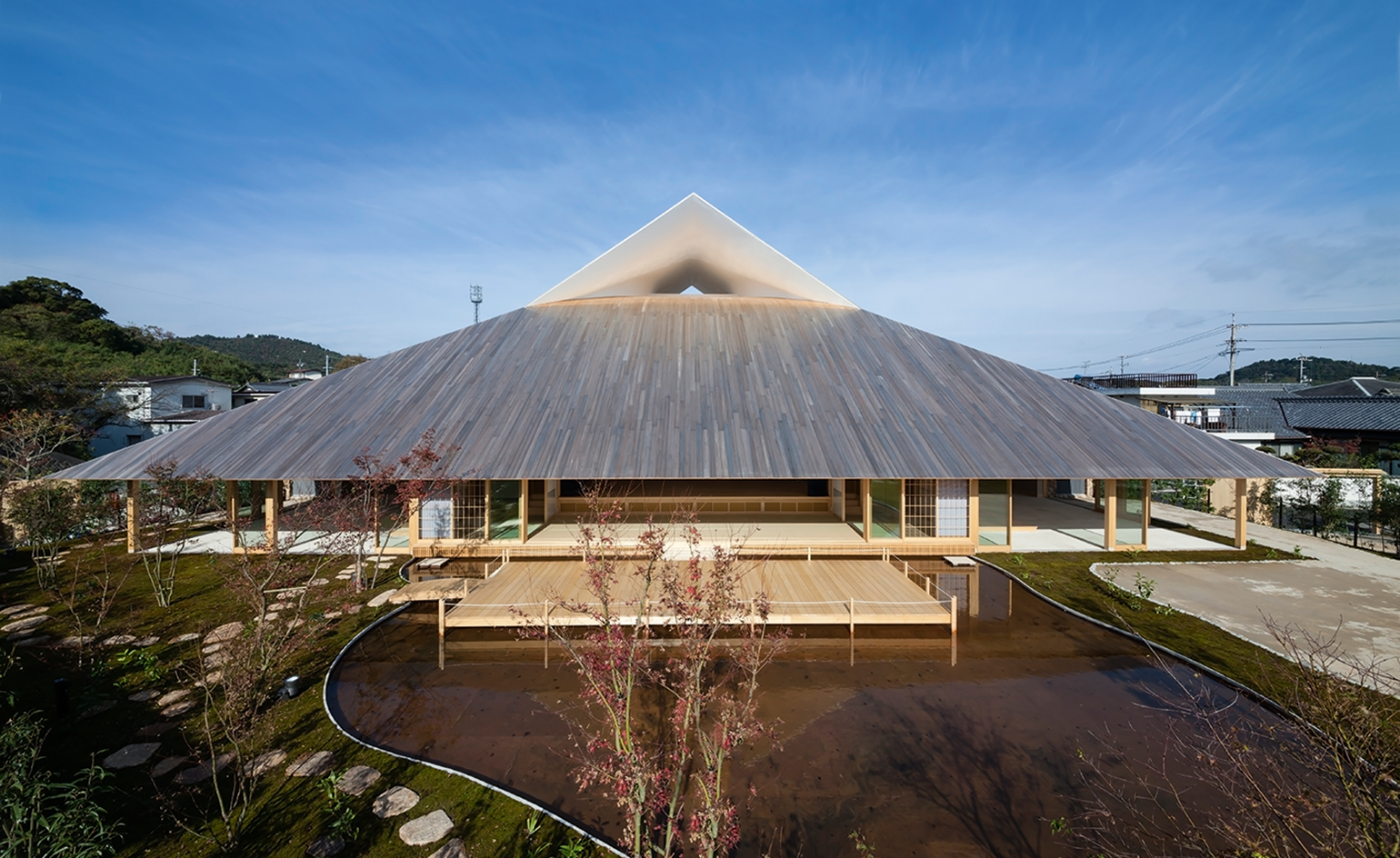 Take a tour of the 'architectural kingdom' of Japan
Take a tour of the 'architectural kingdom' of JapanJapan's Seto Inland Sea offers some of the finest architecture in the country – we tour its rich selection of contemporary buildings by some of the industry's biggest names
-
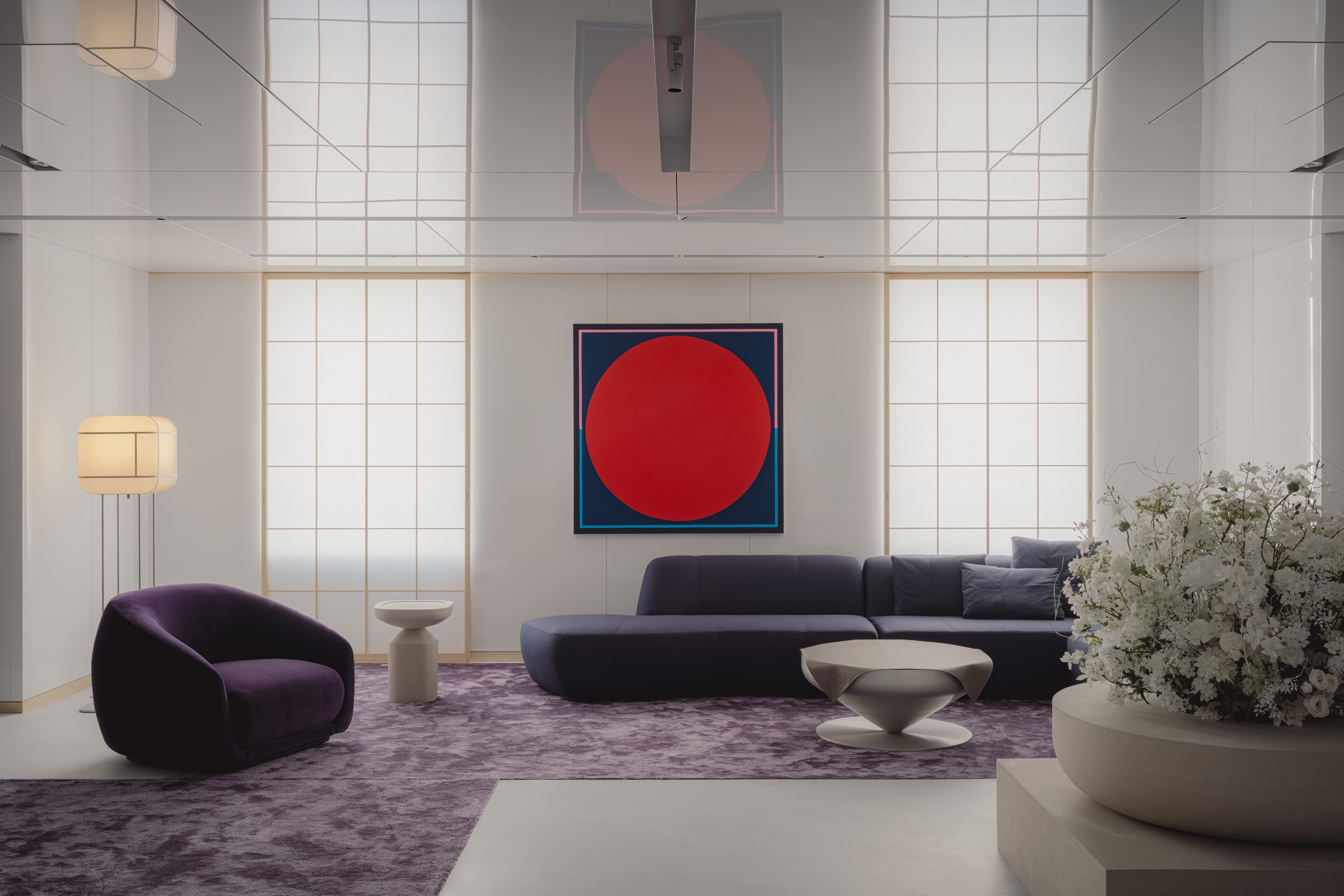 Matsuya Ginza lounge is a glossy haven at Tokyo’s century-old department store
Matsuya Ginza lounge is a glossy haven at Tokyo’s century-old department storeA new VIP lounge inside Tokyo’s Matsuya Ginza department store, designed by I-IN, balances modernity and elegance
-
 The Architecture Edit: Wallpaper’s houses of the month
The Architecture Edit: Wallpaper’s houses of the monthThis September, Wallpaper highlighted a striking mix of architecture – from iconic modernist homes newly up for sale to the dramatic transformation of a crumbling Scottish cottage. These are the projects that caught our eye
-
 Utopian, modular, futuristic: was Japanese Metabolism architecture's raddest movement?
Utopian, modular, futuristic: was Japanese Metabolism architecture's raddest movement?We take a deep dive into Japanese Metabolism, the pioneering and relatively short-lived 20th-century architecture movement with a worldwide impact; explore our ultimate guide
-
 A new Tadao Ando monograph unveils the creative process guiding the architect's practice
A new Tadao Ando monograph unveils the creative process guiding the architect's practiceNew monograph ‘Tadao Ando. Sketches, Drawings, and Architecture’ by Taschen charts decades of creative work by the Japanese modernist master
-
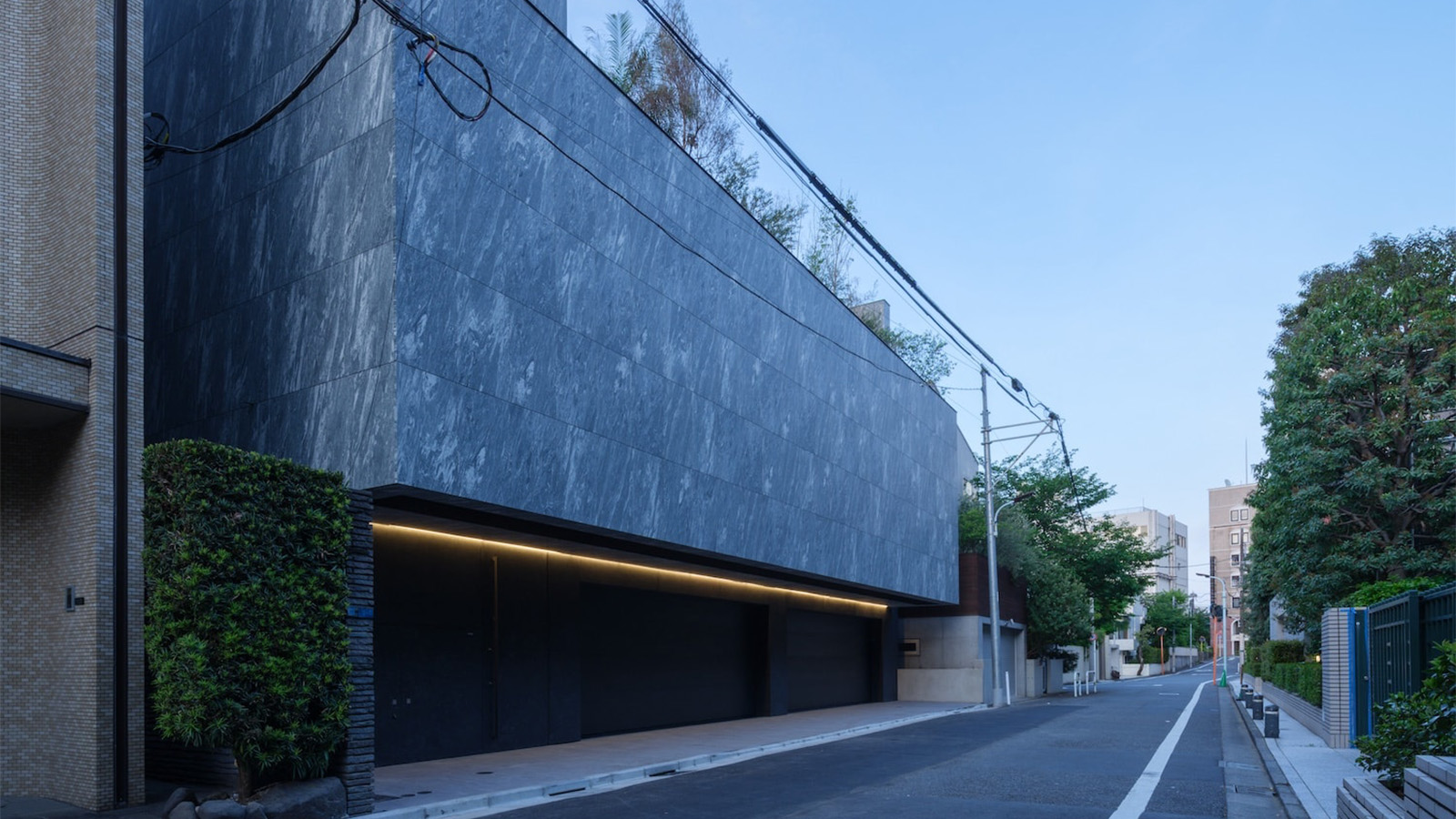 A Tokyo home’s mysterious, brutalist façade hides a secret urban retreat
A Tokyo home’s mysterious, brutalist façade hides a secret urban retreatDesigned by Apollo Architects, Tokyo home Stealth House evokes the feeling of a secluded resort, packaged up neatly into a private residence
-
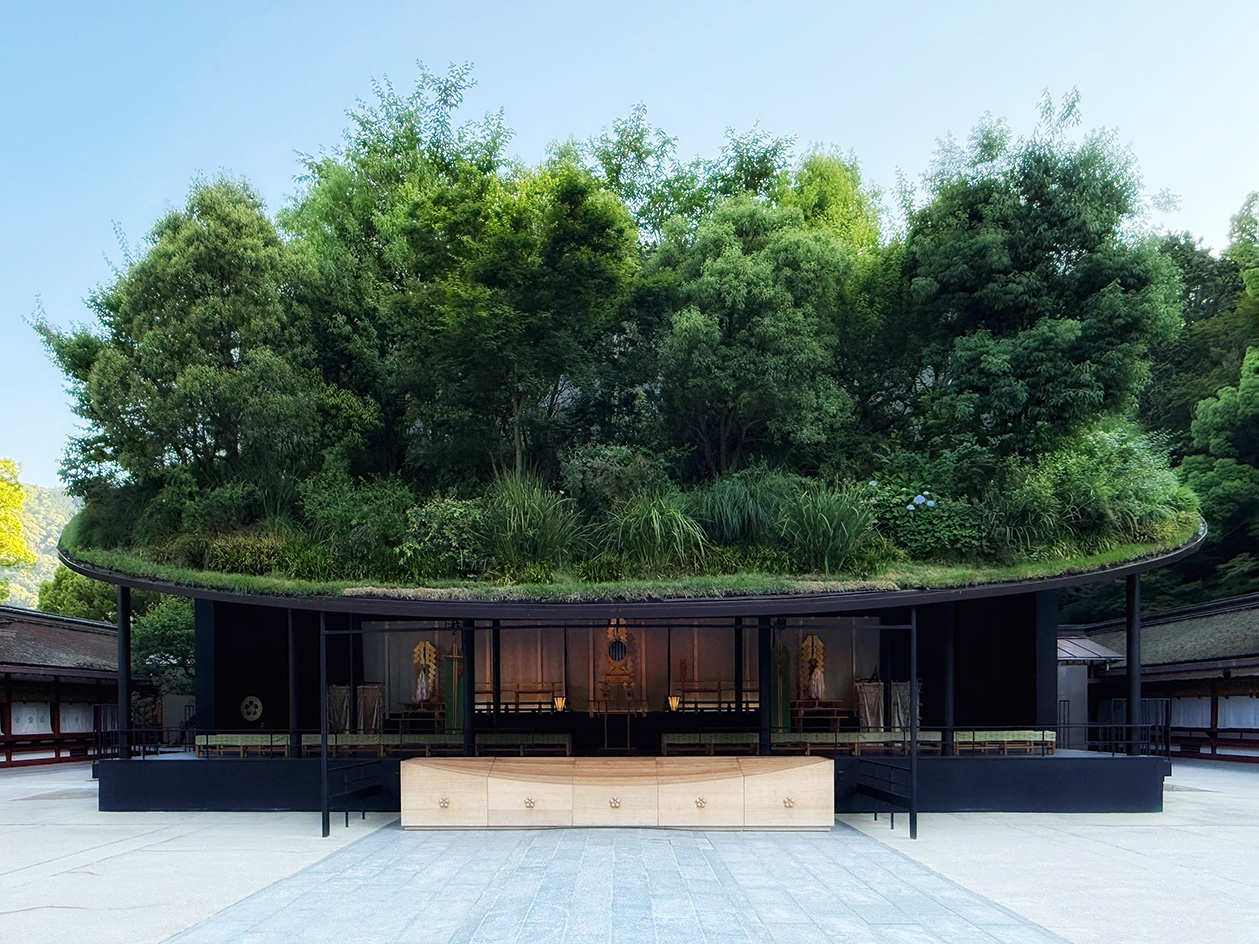 Landscape architect Taichi Saito: ‘I hope to create gentle landscapes that allow people’s hearts to feel at ease’
Landscape architect Taichi Saito: ‘I hope to create gentle landscapes that allow people’s hearts to feel at ease’We meet Taichi Saito and his 'gentle' landscapes, as the Japanese designer discusses his desire for a 'deep and meaningful' connection between humans and the natural world